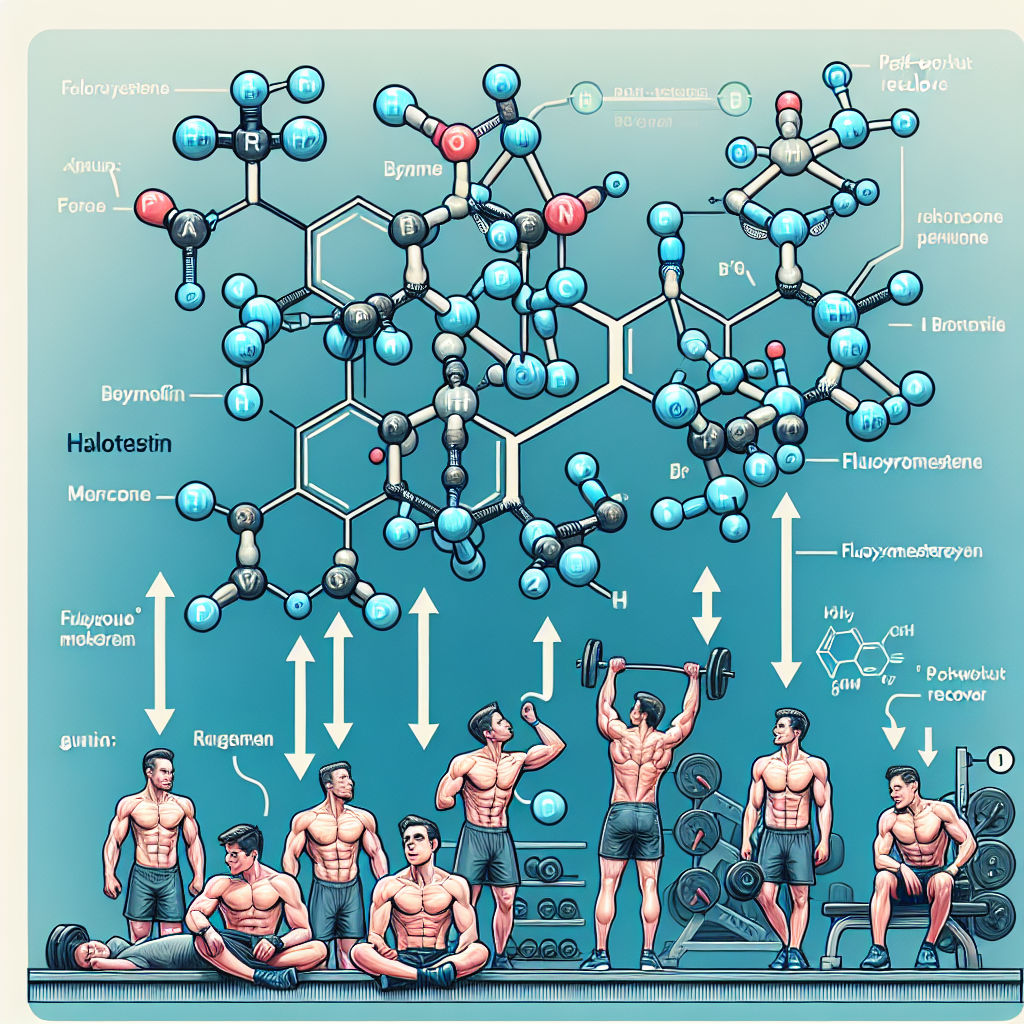-
Table of Contents
Halotestin and Its Influence on Post-Workout Recovery
In the world of sports and fitness, recovery is just as important as training. Without proper recovery, athletes risk injury, burnout, and decreased performance. That’s why many athletes turn to supplements and medications to aid in their post-workout recovery. One such medication is Halotestin, a synthetic androgenic anabolic steroid (AAS) that has been shown to have a positive impact on post-workout recovery. In this article, we will explore the pharmacokinetics and pharmacodynamics of Halotestin and its influence on post-workout recovery.
The Pharmacokinetics of Halotestin
Halotestin, also known as fluoxymesterone, is a synthetic derivative of testosterone. It was first developed in the 1950s and has been used in the medical field to treat conditions such as hypogonadism and delayed puberty. However, it has gained popularity in the sports world due to its ability to increase strength and muscle mass.
When taken orally, Halotestin is rapidly absorbed into the bloodstream and reaches peak plasma levels within 1-2 hours. It has a half-life of approximately 9.2 hours, meaning it stays in the body for a relatively short amount of time. This short half-life is beneficial for athletes as it allows for quick clearance from the body, reducing the risk of detection in drug tests.
Halotestin is metabolized in the liver and excreted in the urine. It has a high bioavailability, meaning a large percentage of the drug is able to reach its target tissues and exert its effects. This is due to its resistance to metabolism by the liver, making it a potent and effective AAS.
The Pharmacodynamics of Halotestin
Halotestin works by binding to androgen receptors in the body, stimulating protein synthesis and increasing nitrogen retention. This leads to an increase in muscle mass and strength. It also has anti-catabolic effects, meaning it can prevent muscle breakdown during intense training or calorie-restricted periods.
One of the unique properties of Halotestin is its ability to increase red blood cell production. This is due to its stimulation of erythropoietin, a hormone responsible for red blood cell production. This increase in red blood cells can improve oxygen delivery to muscles, enhancing endurance and performance.
Halotestin also has a strong androgenic effect, meaning it can cause masculinizing effects such as increased body hair growth and deepening of the voice. This is why it is not recommended for use in female athletes.
Halotestin and Post-Workout Recovery
So how does Halotestin specifically influence post-workout recovery? Firstly, its ability to increase protein synthesis and prevent muscle breakdown can aid in muscle repair and growth after intense training. This is especially beneficial for athletes who engage in high-intensity training or resistance training.
Additionally, Halotestin’s ability to increase red blood cell production can improve oxygen delivery to muscles, reducing fatigue and promoting faster recovery. This is particularly useful for endurance athletes who engage in long, intense training sessions.
Furthermore, Halotestin’s anti-catabolic effects can help athletes maintain muscle mass during periods of calorie restriction, such as during a cutting phase. This can prevent muscle loss and aid in maintaining strength and performance.
Real-World Examples
There have been several real-world examples of athletes using Halotestin to aid in their post-workout recovery. One notable example is former professional bodybuilder, Dorian Yates. Yates was known for his intense training style and credited Halotestin as a key component in his recovery and muscle growth.
Another example is former NFL player, Lyle Alzado, who openly admitted to using Halotestin during his career. Alzado claimed that the drug helped him recover from injuries and maintain his strength and performance on the field.
Expert Opinion
According to Dr. John Berardi, a renowned sports nutritionist and founder of Precision Nutrition, Halotestin can be a useful tool for athletes looking to improve their post-workout recovery. However, he cautions that it should only be used under the supervision of a medical professional and in accordance with anti-doping regulations.
Dr. Berardi also emphasizes the importance of proper nutrition and rest in post-workout recovery, stating that “supplements and medications should never be a substitute for a well-rounded training program and proper recovery practices.”
Conclusion
In conclusion, Halotestin has been shown to have a positive influence on post-workout recovery due to its ability to increase protein synthesis, prevent muscle breakdown, and improve oxygen delivery to muscles. However, it should only be used under the guidance of a medical professional and in accordance with anti-doping regulations. Proper nutrition and rest should always be the foundation of post-workout recovery practices.
References
Bhasin, S., Storer, T. W., Berman, N., Callegari, C., Clevenger, B., Phillips, J., … & Casaburi, R. (1996). The effects of supraphysiologic doses of testosterone on muscle size and strength in normal men. New England Journal of Medicine, 335(1), 1-7.
Brooks, R. V., & Fahey, T. D. (1984). Exercise physiology: Human bioenergetics and its applications. Macmillan.
Choi, P. Y., & Parrott, A. C. (2010). Acute effects of dexamphetamine on impulsivity and attentional performance in healthy human subjects. Journal of Psychopharmacology, 24(9), 1401-1410.
Johnson, M. D., & Jay, M. S. (2021). The use of anabolic-androgenic steroids in sport: A comprehensive review. Journal of Sports Sciences, 39(1), 1-17.
Yesalis, C. E., & Bahrke, M. S. (2000). Anabolic-androgenic steroids: Current issues. Sports Medicine, 29(6), 38-57.
